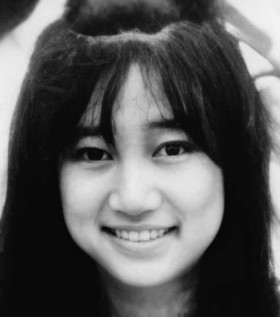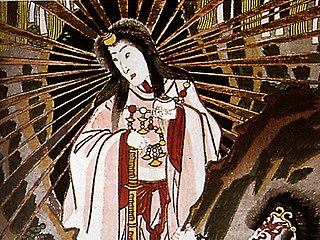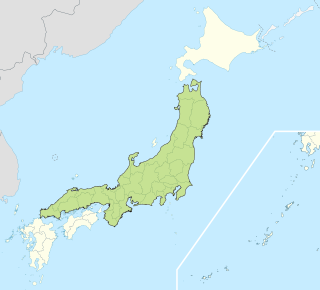Annotations
Footnotes
- ↑ Misonori Yasumoto once evaluated Takehiko Furuta as "capable of discussing the issue on a concrete, empirical level," but he has changed his view and criticized Furuta's theory in a series of books ("There Was No 'Yamatai'" and "The False Kyushu Dynasty" as well as the magazine "Yamatai Quarterly" and other publications).
- ↑ Recently, Takehiko Furuta, in "Critique of the Historical Records of the Kyushu Dynasty," in Gakushikai Hou (Bulletin of the Japan Academy of Sciences) No. 857 2006-II, states that "the academic community's response to this is lacking.
- ↑ Members away from Furuta include those in Tohoku, Kanto, and Hokuriku.
- ↑ Those in this stream have joined Shoichiro Shirasaki's "Ancient Sea of Japan Culture," a well-known researcher of the Yamato Kinai theory of Yamato in the Yamataikoku region, to publish the quarterly "The Sea of Ancient History.
- ↑ A press release from ContentWorks Corporation (July 24, 2008) states, "Includes an expert opinion by Professor Kazuhiko Kasaya of the International Research Center for Japanese Studies. It has been proven that the Kansei original is a document created during the Edo period." It states.
- ↑ Note that prior to the publication of this book, Furuta claimed to have conducted radiocarbon dating of the "Kansei original," but there is no mention of this.
- ↑ Common belief is that it was adapted from the United States Declaration of Independence. See Keio Encyclopedia , No. 22 consideration, Heaven does not create mankind above mankind: .......
- ↑ While criticizing Furuta's theory, Taku Tanaka evaluates the theory denying the falsification of the Kotaio monument, the theory that Emperor Jinmu existed, and the theory of Kitakyushu as the place of departure for the eastern expedition of Jinmu. Tanaka Taku also criticizes Furuta's theory and evaluates the theory that falsification of the Kotaio monument was denied, the theory that Emperor Jinmu existed, and the theory of Kitakyushu as the place of departure for the eastern expedition of Jinmu.
- ↑ According to the fifteenth volume of "Seeking Truth in Antiquity," he was also abused as an anti-Koreanist on the street, he said.
Related Research Articles
Himiko, also known as Shingi Waō, was a shamaness-queen of Yamatai-koku in Wakoku (倭国). Early Chinese dynastic histories chronicle tributary relations between Queen Himiko and the Cao Wei Kingdom (220–265) and record that the Yayoi period people chose her as ruler following decades of warfare among the kings of Wa. Early Japanese histories do not mention Himiko, but historians associate her with legendary figures such as Empress Consort Jingū, who is said to have served as regent from 201 to 269.

Junko Furuta was a Japanese high school student who was abducted, raped, tortured and subsequently murdered. Her case was called the "concrete-encased high school girl murder case" (女子高生コンクリート詰め殺人事件), since her body was discovered in a concrete drum.

The Hayato (隼人), which is Japanese for "falcon-people", were a people of ancient Japan who lived in the Satsuma and Ōsumi regions of southern Kyushu during the Nara period. They frequently resisted Yamato rule. After their subjugation they became subjects of the government under Ritsuryō, and the Ministry of the Military had an office known as the Hayato-shi (隼人司) in charge of their governance. The name also came into use by samurai as a title, Hayato no suke (隼人助). In modern times, Hayato is a Japanese male given name.
The Book of Liang was compiled under Yao Silian and completed in 635. Yao heavily relied on an original manuscript by his father Yao Cha, which has not independently survived, although Yao Cha's comments are quoted in several chapters.
Yamatai or Yamatai-koku(邪馬台国)(c. 1st century –c. 3rd century) is the Sino-Japanese name of an ancient country in Wa (Japan) during the late Yayoi period (c. 1,000 BCE –c. 300 CE). The Chinese text Records of the Three Kingdoms first recorded the name as (邪馬臺) or (邪馬壹) followed by the character 國 for "country", describing the place as the domain of Priest-Queen Himiko (卑弥呼). Generations of Japanese historians, linguists, and archeologists have debated where Yamatai was located and whether it was related to the later Yamato (大和国).

In Japanese mythology, Takamagahara, is the abode of the heavenly gods (amatsukami). Often depicted as located up in the sky, it is believed to be connected to the Earth by the bridge Ame-no-ukihashi.

Arata Furuta is a Japanese theatre and film character actor.
Toyo (臺與/台与), also known as Iyo (壹與/壱与), (235–?) was a queen regnant of Yamatai-koku in Japan. She was, according to the "Records of Wei" and other traditional sources, the successor of Queen Himiko.

Jimmu's Eastern Expedition (神武東征) refers to a series of stories in which Emperor Jimmu became the first emperor of Japan, after defeating Nagasunehiko, who had ruled the Nara Basin and its surrounding area, after leaving Hyuga Province.

The Yamato Kingship was a tribal alliance centered on the Yamato region from the 4th century to the 7th century, and ruled over the alliance of noble families in the central and western parts of the Japanese archipelago. The age is from the 4th to the 7th century, later than the Yamatai Kingdom. After the Taika Reform, the ōkimi as an emperor, at that time, was in power, and the Yamato period ended. The time period is archaeologically known as the Kofun period. Regarding its establishment, due to the relationship between Yamatai and Yamato's succession to the king's power, there are very different views on it.

The Hashihaka kofun is a megalithic tomb (kofun) located in Sakurai, Nara Prefecture, Japan. The Hashihaka kofun is considered to be the first large keyhole-shaped kofun constructed in Japan and is associated with the emergence of the Yamato Kingship.

The Yamatai Honshu Theory is the theory that the Yamatai kingdom was located in Honshu, specifically Kinai, where the capital was located in the Kofun period rather than in Kyushu as the Yamatai Kyushu Theory proposes.

The Makimuku ruins are ruins in Nara Prefecture Sakurai near Mount Miwa of the Yayoi Period.

The Yamatai Kyushu Theory is the theory that the Yamatai kingdom was located in Kyushu rather than in Honshu as the Yamatai Honshu Theory proposes.

The Wajinden are passages in the 30th fascicle of the Chinese history chronicle Records of the Three Kingdoms that talk about the Wa people, who would later be known as the Japanese people. It describes the mores, geography, and other aspects of the Wa, the people and inhabitants of the Japanese archipelago at the time. The Records of the Three Kingdoms was written by Chen Shou of the Western Jin dynasty at the end of the 3rd century.
Wakoku was the name used by early imperial China and its neighbouring states to refer to the nation usually identified as Japan. There are various theories regarding the extent of power of the early kings of Japan. According to the Book of Sui and the History of the Northern Dynasties, its borders were five months from east to west and three months from north to south. The Wajin appear in historical documents such as the Book of Han and the Geographical Survey of Japan from around the 2nd century BC. In the late 7th century, the Yamato kingdom, which had been called Yamato, changed its external name to Japan, but its relation to Japan since Book of the Later Han is not clear. There are discrepancies in the descriptions of the Old Book of Tang and the New Book of Tang.
Kununokuni (狗奴国)(Kunu no kuni/kunukoku、Kuna no Kuni/Kunakoku、Konanokuni / Konakoku) was a Japanese country that was in conflict with Yamatai, which is mentioned in the "Wajinden" in the "Book of Wei" in the Chinese history book "Records of the Three Kingdoms" of the Three Kingdoms period.
Himikoko/Himikuko was a male king of Kununokuni, recorded in the Wajinden, a 3rd century figure from Wakoku in the 3rd century. Naitō Torajirō proposed the theory that he was Himikoso.

Ito-koku (伊都国) is one of the countries in Wa-koku, which appears in Chinese historical books such as Wajinden. It is said to be located 500 ri southeast of Matsurokoku, in the Yamato era, in the Prefecture of Ito, now Fukuoka Prefecture Itoshima City and part of Fukuoka City.

Fumikoku (不弥国) is one of the countries that existed in the Japanese archipelago in the 3rd century.
References
- ↑ "訃報:古田武彦さん89歳=古代史研究家 - 毎日新聞". 2015-10-15. Archived from the original on 2015-10-15. Retrieved 2022-04-04.
- ↑ 東方史学会好太王碑訪中団の報告. www.furutasigaku.jp. Archived from the original on 2022-04-04. Retrieved 2022-04-04.
- ↑ Furuta's first book, There Was No "Yamataikoku", was also published by the Asahi Shimbun. The first is the "Municipalities of the World" (Mukden, 1985).
- ↑ 弘信, ナガタニ] (2010). "「三夢記」考". 宗教研究. 84 (3): 707–732. doi:10.20716/rsjars.84.3_707.
- ↑ 『真実の東北王朝』(駸々堂出版、1990年) 第4、5、6章
- ↑ 安本美典、谷川健一(他)『東日流外三郡誌「偽書」の証明』(廣済堂出版、1993年)、斉藤光政『偽書「東日流外三郡史」事件』(新人物往来社、2009年)等参照。
- ↑ 『新・古代学』(新泉社、1995年)
- ↑ 『東日流[内・外]三郡誌』(オンブック、2008年)。
- ↑ "歴讀津軽外三郡誌の扱いの疑問 - 一生". 2016-03-09. Archived from the original on 2016-03-09. Retrieved 2022-04-04.
- ↑ "『東日流外三郡誌』関連論考". Archived from the original on 23 January 2013. Retrieved 2022-04-02.
- ↑ 『と学会年鑑AQUA』(楽工社、2008年)
- ↑ 参考(「寛政原本」公表以前の筆跡比較)
- ↑ "考古学のこうじ". 2016-03-04. Archived from the original on 4 March 2016. Retrieved 2022-04-02.
- ↑ The Sixth Book of "The Historiography of Truth".
- ↑ 訃報:古田武彦さん89歳=古代史研究家 Archived 2015-10-15 at the Wayback Machine - 毎日新聞2015年10月15日
- ↑ 古田史学の会のために. www.furutasigaku.jp. Archived from the original on 2016-03-04. Retrieved 2022-04-02.
- ↑ 原田実 2020, p. 245.
- ↑ 原田実 2020, p. 59.
- ↑ 原田実 2020, p. 264.
- ↑ 「邪馬壹国の証明」(『文化評論』228号(1980年4月))。安本美典は「「邪馬壱国」論の崩壊」(『文化評論』230号(1980年6月))を執筆した。
- ↑ 古田武彦(他)『シンポジウム 邪馬壹国から九州王朝へ』(新泉社、1987年)「好太王碑に現れる倭とは何か 藤田友治」
- ↑ 『こんな教科書で学びたい 新しい日本の歴史』(教科書改善の会の教科書の市販版)参照
- ↑ "「日の丸」と「君が代」の歴史と自然認識について". www.furutasigaku.jp. Archived from the original on July 20, 2016. Retrieved 2022-04-04.
- ↑ "靖国参拝の本質" [The Nature of Yasukuni Pilgrimage]. 2001-05-10. Archived from the original on 2016-04-03. Retrieved 2022-04-04.
- 1 2 "古田・安川対談について" [about the Furuta-Yasukawa dialogue]. www.furutasigaku.jp. Archived from the original on 2022-04-04. Retrieved 2022-04-04.
- ↑ 古田武彦『盗まれた神話』参照。
- ↑ 『平山洋氏の仕事』の「2007年02月19日到着 安川寿之輔氏からの手紙」を参照。
- ↑ 原田実 (January 2007). "捏造された福沢諭吉像―今も進行する『東日流外三郡誌』汚染―". 原田 実の幻想研究室. Archived from the original on 2015-05-09. Retrieved 2016-03-20.
- ↑ 安川寿之輔 (February 2007). "『福沢諭吉の戦争論と天皇制論』「天は人の上に人を造らず・・・」の出典について" (PDF). 高文研. Retrieved 2011-04-10.
- ↑ 「対談 夢は地球をかけめぐる 小松左京さんと語る」(『邪馬一国への道標』角川文庫版、巻末)
- ↑ 「神津恭介氏への挑戦状『邪馬台国の秘密』をめぐって」(古田武彦『「邪馬壹国」の論理』(朝日新聞社、1975年))
- ↑ 高木彬光『邪馬壱国の非論理』(私家版、1977年)、高木彬光『邪馬壹国の陰謀』(日本文華社、1978年)